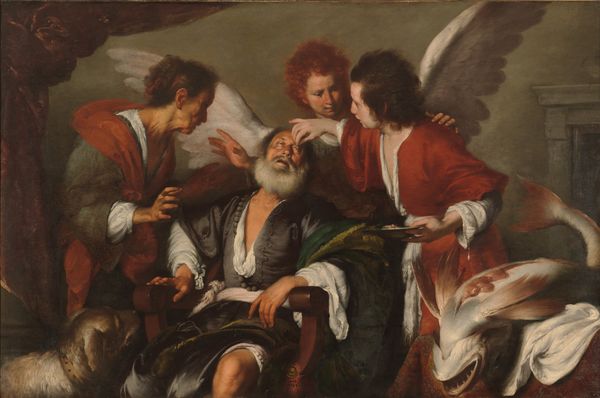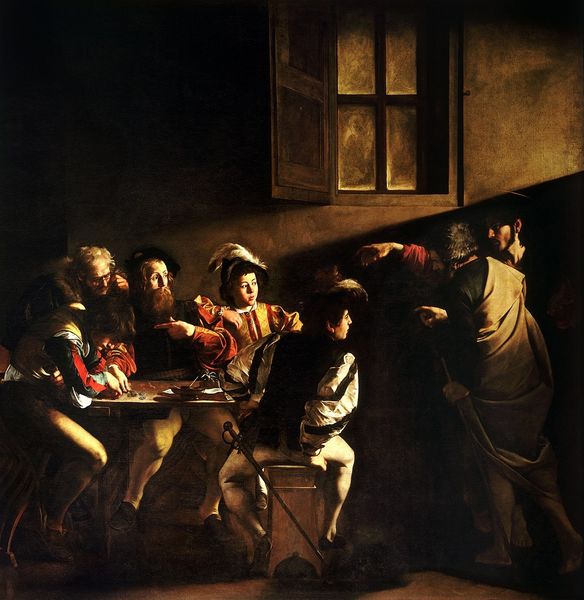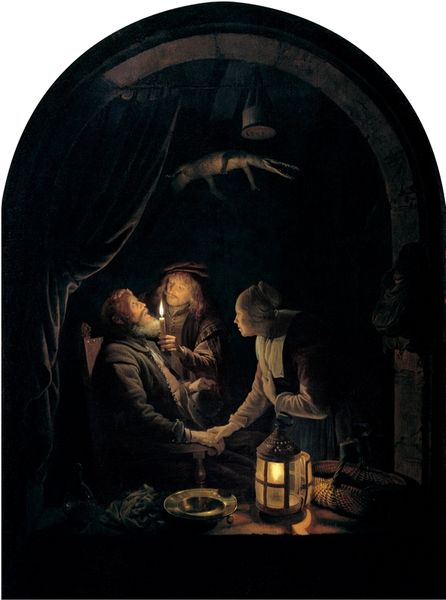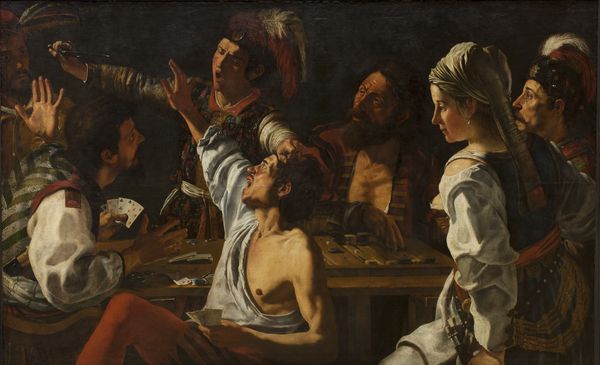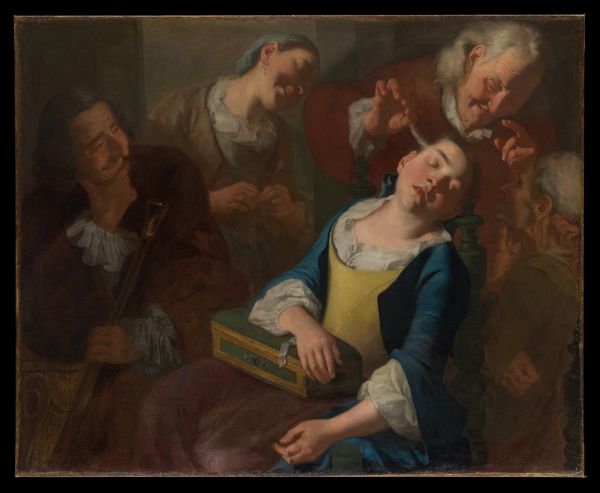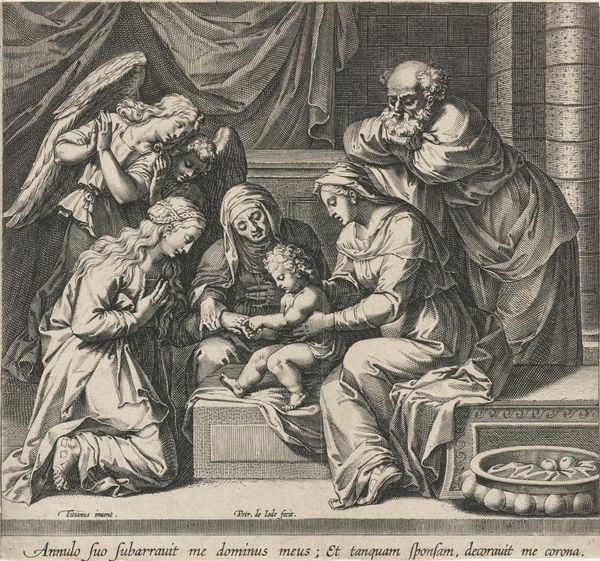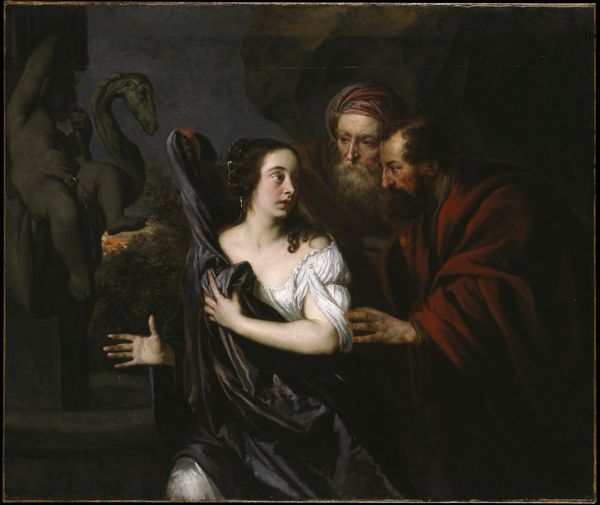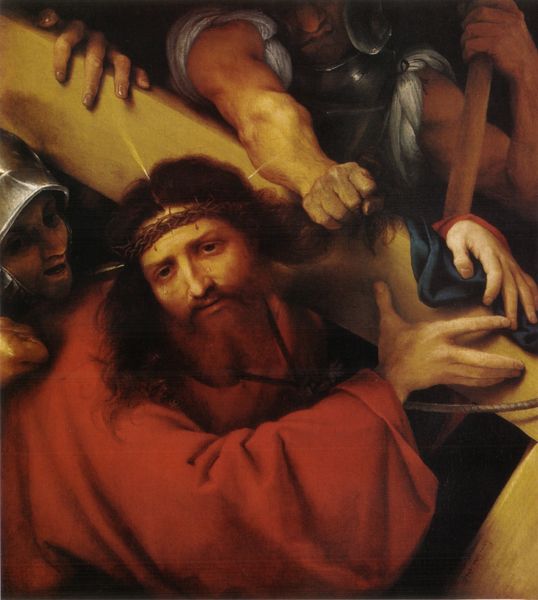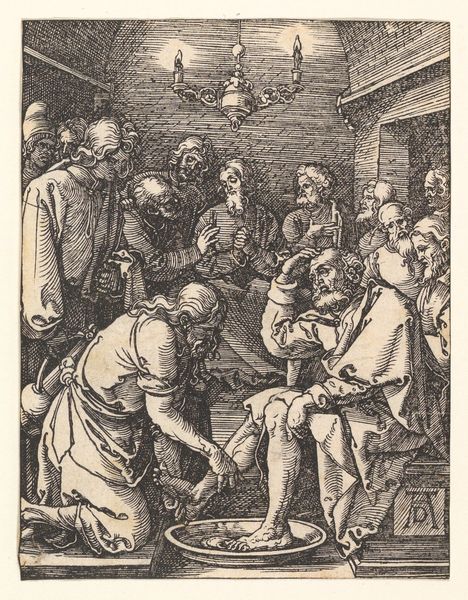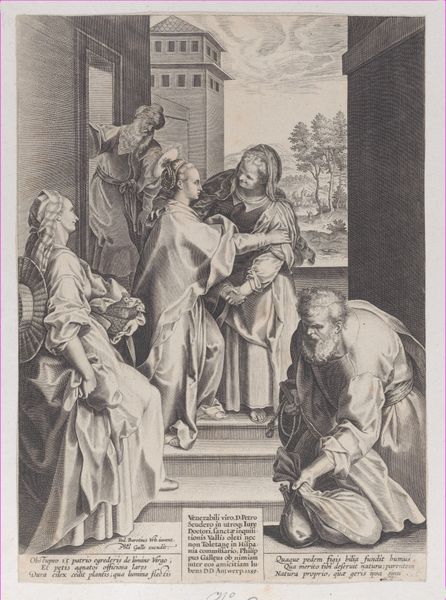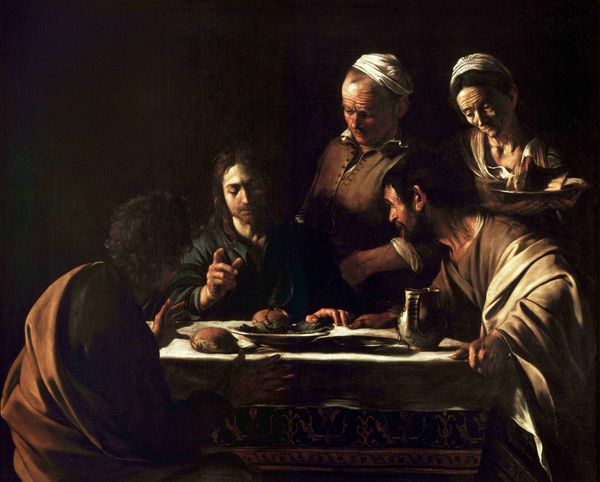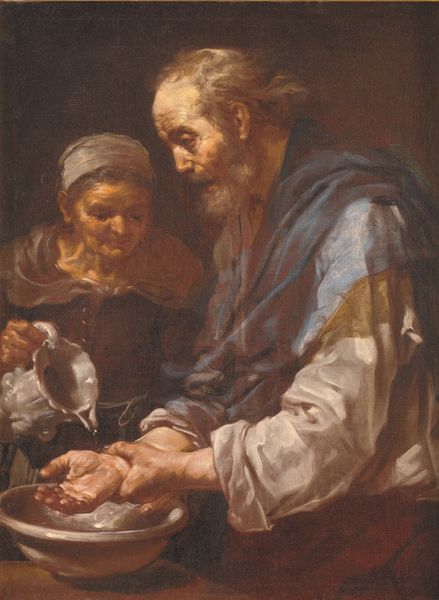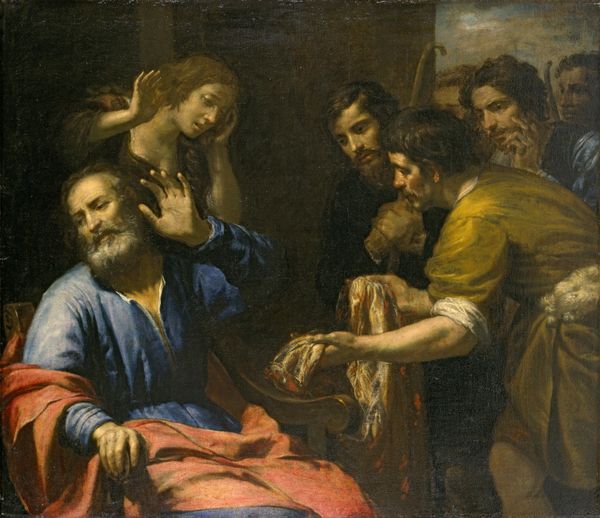
painting, oil-paint
#
baroque
#
dutch-golden-age
#
painting
#
oil-paint
#
figuration
#
genre-painting
#
nude
Dimensions: support height 99.5 cm, support width 95.3 cm, outer size depth 9 cm
Copyright: Rijks Museum: Open Domain
Curator: Looking at "The Procuress," painted after 1623 by Dirck van Baburen, I’m immediately struck by its theatrical lighting. Editor: Indeed. The chiaroscuro plunges much of the background into darkness, drawing intense attention to the figures, creating a stage-like setting. What contextual layers do you find here? Curator: Well, this genre scene encapsulates so much about the social realities of the Dutch Golden Age. The suggestive interplay of the figures points to a commodification of intimacy, reflecting the era's complex economic and moral landscape. The woman's gaze upward seems a performative act. The male figure and elderly procuress facilitate and profit from the exchange. Editor: Agreed. Observe the precise geometry, though: The triangle formed by their heads and hands is not merely a grouping; it’s the very architecture of desire, meticulously constructed through compositional balance and tonal shifts. Semiotically speaking, that lute bridges both figures with an uncanny phallic suggestiveness. Curator: Absolutely, and let’s not ignore the problematic gender dynamics, so prevalent historically. The painting underscores the precariousness of female agency within a patriarchal structure. Here, a woman's body is presented as an object of financial negotiation, highlighting broader questions of power, class, and the male gaze. Editor: Yes, that gaze is undeniable. And the artist’s treatment of textures—the velvet of the man’s cap versus the creased skin of the procuress, the shimmer of the young woman’s loosened blouse—demonstrates van Baburen’s capacity to invoke touch visually. Each is delineated not only for description but for emotive weight. Curator: It brings into view questions of exploitation and complicity, echoing long through histories of gender inequality and reinforcing visual discourses surrounding sex and economics. Editor: It seems that even now, these artistic considerations reveal the very anatomy of desire, expertly sculpted into pigment, and displayed to our own lingering, critical gaze.
Comments
No comments
Be the first to comment and join the conversation on the ultimate creative platform.
